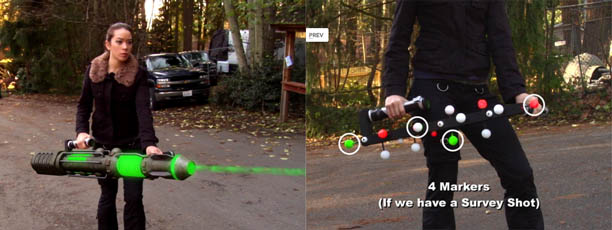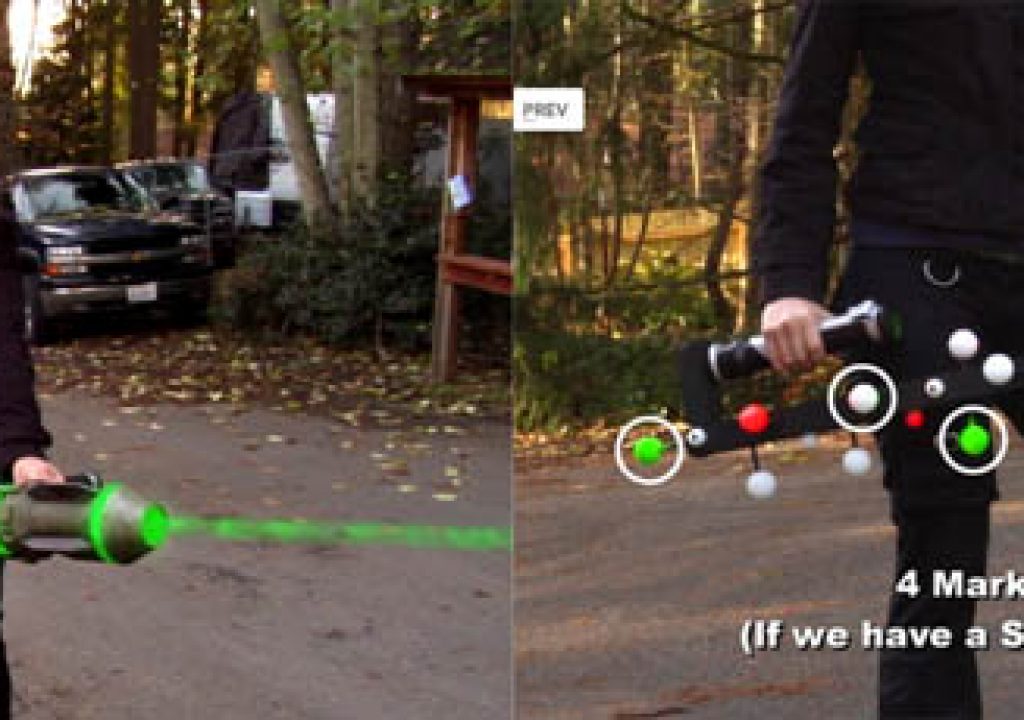
The past decade has seen visual effects pervade film and television production to the extent that it is rare to see a television commercial with no visual effects, even documentary-style dramatic programs are sweetened and cleaned up via compositing, and films outside the big-budget action movie genre often have vfx shot counts in the dozens or even hundred.
This changing of the guard has not been without its difficulties; principle among these are the veteran directors and art directors who learned how to craft compelling images and stories before the computer became a routine part of the process. Good visual effects shooting is all about planning, but effective planning requires experience.
Visual Effects for Directors, a 7 DVD set released by Hollywood Camera Work, is inspiring for how thoroughly and patiently it visually explains how to shoot ordinary, bread-and-butter visual effects shots. Far from the mystifyingly complex techniques used to push the entire medium forward in, say, the latest recipient of the Visual Effects Oscar, the approaches shown on these seven videos are in the realm of what should be common knowledge among effects professionals.
I can say from personal experience that when I wrote the first edition of After Effects Studio Techniques the idea was that many effects techniques are (and should be) common knowledge among professionals. This set takes a similar point of view, and writer/director Per Holmes is not afraid to take a stand and be very specific about how to shoot for a given effect.
The first four discs are all about the integration of 3D and 2D, beginning with a primer on what goes into creating 3D elements and then individual sections on how, for example, to track and replace an object, or how to approach motion capture. Not until discs 5 and 6 does green screen take focus, with the final disc more thoroughly working through compositing shots featured throughout the tutorials.
The presentation is not intended to be fast-paced and entertaining; quite the opposite, the narration is careful and deliberate. This, however, is not to say that you’re likely to be a bored viewer; in fact, if you’ve endured the stress of not knowing how to do this stuff, you may find you can’t wait for each succeeding section and disc. The pacing will not leave behind any viewer.
The judgments held by the creator of the series are sound and based on years of professional experience, and there are some really nice tidbits and tips I had never heard of – including how to get good greenscreen paint mixed at a hardware store, and how mixing sand into it helps diffuse light along the curve of the cyc. The examples themselves are cruder than finished vfx shots, but given the volume of material, that’s all that one could expect and if anything it only helps to show the seams of a shot, something we usually endeavor to hide.
All in all, the set fills a niche that has been sorely vacant for too long. If your living depends on understanding how to plan and shoot visual effects and you lack first-hand experience with computer graphics, you will benefit from Visual Effects for Directors.
At this writing the set is available at a 40% discount using code FCENTRAL at checkout.

